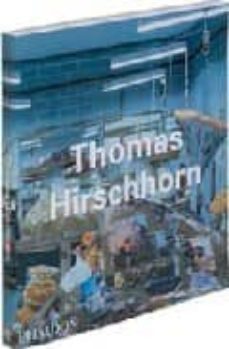Imprescindibles
Ficción
No Ficción
Ciencias y tecnología Biología Ciencias Ciencias naturales Divulgación científica Informática Ingeniería Matemáticas Medicina Salud y dietas Filología Biblioteconomía Estudios filológicos Estudios lingüísticos Estudios literarios Historia y crítica de la Literatura
Humanidades Autoayuda y espiritualidad Ciencias humanas Derecho Economía y Empresa Psicología y Pedagogía Filosofía Sociología Historia Arqueología Biografías Historia de España Historia Universal Historia por países
Infantil
Juvenil
#Jóvenes lectores Narrativa juvenil Clásicos adaptados Libros Wattpad Libros Booktok Libros de influencers Libros de Youtubers Libros Spicy Juveniles Libros LGTBIQ+ Temas sociales Libros ciencia ficción Libros de acción y aventura Cómic y manga juvenil Cómic juvenil Manga Shonen Manga Shojo Autores destacados Jennifer L. Armentrout Eloy Moreno Nerea Llanes Hannah Nicole Maehrer
Libros de fantasía Cozy Fantasy Dark academia Hadas y Fae Romantasy Royal Fantasy Urban Fantasy Vampiros y hombres lobo Otros Misterio y terror Cozy mistery Policiaca Spooky Terror Thriller y suspense Otros
Libros románticos y de amor Dark Romance Clean Romance Cowboy Romance Mafia y amor Romance dramatico Romcom libros Sport Romance Otros Clichés Enemies to Lovers Friends to Lovers Hermanastros Slow Burn Fake Dating Triángulo amoroso
Cómic y manga
Novela gráfica Novela gráfica americana Novela gráfica europea Novela gráfica de otros países Personajes, series y sagas Series y sagas Star Wars Superhéroes Cómics DC Cómics Marvel Cómics otros superhéroes Cómics Valiant
eBooks
Literatura Contemporánea Narrativa fantástica Novela de ciencia ficción Novela de terror Novela histórica Novela negra Novela romántica y erótica Juvenil Más de 13 años Más de 15 años Infantil eBooks infantiles
Humanidades Autoayuda y espiritualidad Ciencias humanas Economía y Empresa Psicología y Pedagogía Filosofía Historia Historia de España Historia Universal Arte Cine Música Historia del arte
Ciencia y tecnología Ciencias naturales Divulgación científica Medicina Salud y dietas Filología Estudios lingüísticos Estudios literarios Historia y crítica de la Literatura Estilo de vida Cocina Guías de viaje Ocio y deportes
BENJAMIN H.D. BUCHLOH
Recibe novedades de BENJAMIN H.D. BUCHLOH directamente en tu email
Filtros
Del 1 al 2 de 2
PHAIDON PRESS LIMITED 9780714842738
Thomas Hirschhorn is a Swiss-born artist who emerged in the 1990s art world, and known for his giant, labour-intensive, room-sized collages of low grade materials. Tinfoil, cardboard, plywood, plastic and masking tape bring together an infinite variety of debris, including handwritten texts and images culled form popular magazines; miniature toy airplanes and trains; knick-knacks by the hundreds; armies of plastic ‘goldEwatches; effigies of Nietzsche and Princess Diana; household fans blowing red flags which flutter violently; monitors duct-taped into vitrines, ad infinitum. Borrowing from the languages of installation art, junk art, Pop and others, Hirschhorn’s work comments on the proliferation of consumables (‘very derived productsE the artist calls them) in our shopping-driven society. Despite its overt politics, installations like Bataille Monument (Documenta 11, 2002) Ehis temporary structure situated in a predominantly immigrant Kassel neighbourhood Emaintain a light, contemporary wunderkammer feel to be enjoyed by aficionados and non-initiates alike. Half-sculptural, half-architectural and fully revolutionary, some of his most elaborate installations, such as the multi-room Cavemanman (Barbara Gladstone Gallery, New York, 2002), transform ordinary spaces into a labyrinthine, parallel universe of hybrid forms and fascinating accumulations. A key player in the contemporary art scene today, Hirschhorn moves beyond such recent art forms as the readymade, the ‘post-conceptualEand video, to offer an important, unprecedented direction for 21st century art.
Ver más
Tapa blanda
Ediciones Akal 9788446015093
Frente al dogmatismo de las concepciones que consideran las neovanguardias como una visión reciclada y una repetición espúrea de las vanguardias históricas, Benjamin H. D. Buchloh propone en el presente libro una relectura al respecto en el doble ámbito de las prácticas artísticas europeas y norteamericanas, partiendo del supuesto de que la neovanguardia no tiene por qué convertir lo antiestético en artístico ni lo trasgresor en institucional.La dilatada labor crítica y teórica de Benjamin H. D. Buchloh ha venido dictada por un empeño por precisar distinciones y puntualizar vinculaciones entre la producción artística de ambas vanguardias, tanto en su dimensión política como estética, elaborando un discurso crítico que engrana las relaciones entre la producción cultural y la formación ideológica. Y ello en un complejo proceso de contextualización, en el que cada situación se articula en un desarrollo histórico más extenso.
Ver más
Tapa dura
Del 1 al 2 de 2
























